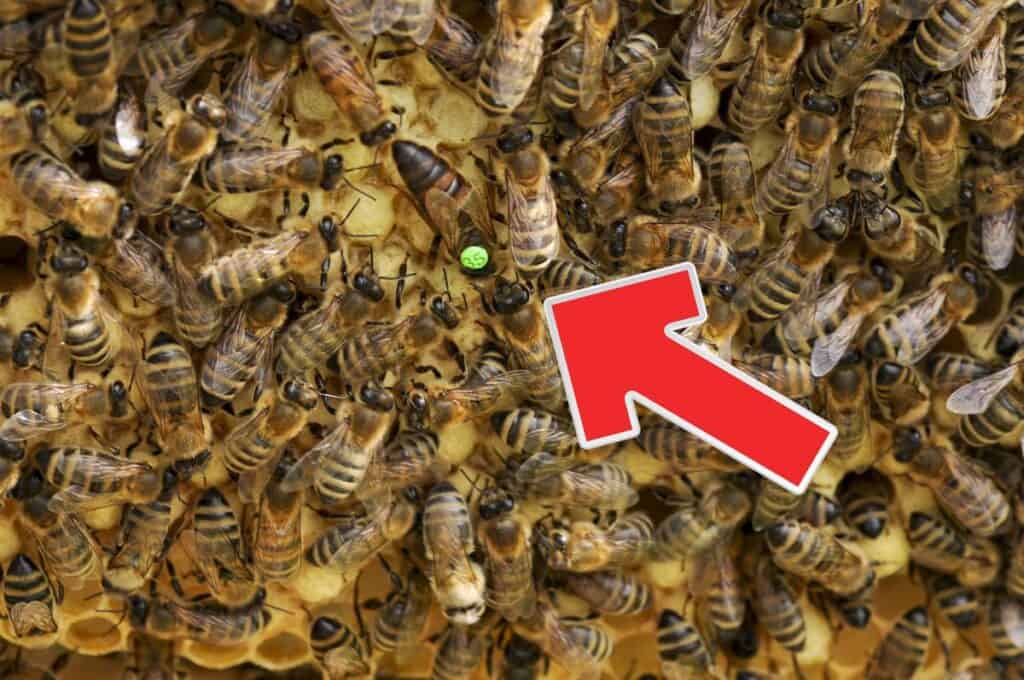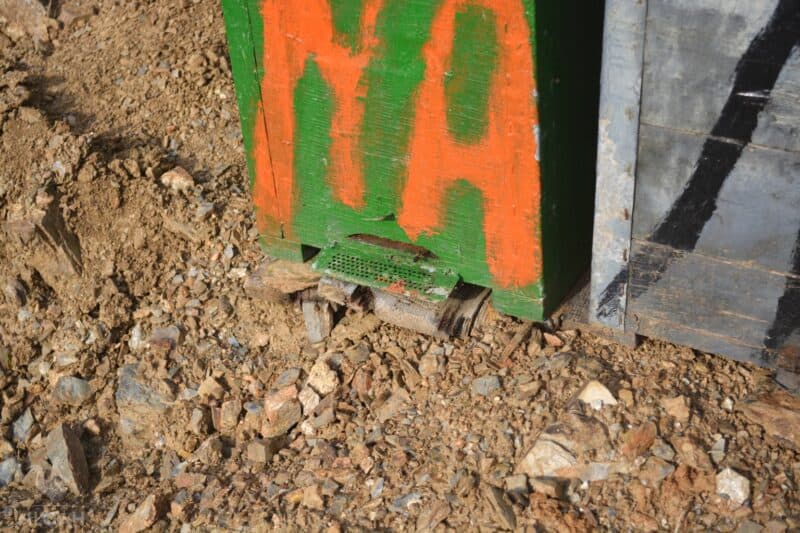In a beehive, every bee has a job to do, and every bee has to do its job so that the hive can sustain and prevail.
But amidst it all, there’s one bee that’s undoubtedly more important than all the others and that is the queen.

The queen bee is responsible for laying countless thousands of eggs every year that will become the new generations of workers and drones in the hive.
But as important as she is, the hive might decide collectively to kill off their queen. That sounds crazy to us! Why might bees decide to kill their queen?
Bees may kill their queen for a number of reasons, including a drop in egg-laying rates, illness or injury, a lack of pheromone production, or if they don’t recognize the queen’s pheromones and suspect her to be an imposter or invader.
The queen is so important that the rest of the hive, collectively, cannot afford for her to not excel at her job.
Accordingly, if she is too old, too hurt, too sick, or just too infirm to lay an adequate number of healthy eggs, they will take action to replace her.
I know this sounds absolutely brutal, and if you want to know the truth I think it is too, but this is just the way that beehives work.
I’ll tell you a lot more about a hive’s rationale for killing their queen below…
Egg Laying Rates are Too Low
The most probable reason that a hive will decide to kill their queen is if she cannot produce enough eggs.
To clarify, queens produce thousands and thousands of eggs over their lifetime, and during seasons of peak production she will lay anywhere from 1,000 to 3,000 eggs every single day!
That’s a lot of bee babies waiting to be born, but she won’t lay every single day throughout the year and she might not lay that many eggs even when she is laying; it depends on the resources available and the needs of the hive.
However, as winter comes to a close and spring begins, or during times of bountiful food sources, she’ll be laying that much every single day for days on end in order to expand the hive and provide the successive generations of worker bees.
But, for whatever reason, if the workers determine that she isn’t laying enough eggs to meet the demands of the hive, it’s highly likely they will turn on her and raise up a new queen from among the female larvae that are already laid.
It’s not entirely certain how worker bees figure this out, but they invariably know.
There’s Something Wrong with Her Eggs or Larvae
Another instance that will turn workers against their queen is if there is something wrong with her brood.
If the workers can detect some defect in the eggs or in the hatched larvae, it’s only a matter of time until they pin it on the queen. That’s because she is the only bee that can lay eggs in the entire hive!
Raising weak, puny, or sickly bees means there is something wrong with the queen, generally, and the workers will take action accordingly.
It is possible that parasites, toxins, infectious diseases, or something else might be causing problems with the eggs or with the larvae themselves.
But often worker bees just seem to know when there’s something fundamentally wrong with them that is due to an issue with the queen.
Whatever the case, whatever the reason, the queen will be overthrown.
Lack of Pheromones
Queen bees don’t really direct a beehive like most people think. Most bees have a job as I mentioned and they know how to do their job instinctively.
That being said, the queen bee’s pheromones can be thought of like the “glue” that holds the hive together, socially speaking.
If the workers and drones can smell the queen’s pheromones, they will be calm, happy, and task-oriented.
However, if they cannot smell the queen’s pheromones that means there might be a problem.
A pronounced lack of pheromones from the queen is yet another indicator that something is probably wrong with her, and if you haven’t guessed by now, that means the workers won’t wait too long before they decide to do something about it…
But, just because some worker bees cannot smell the queen’s pheromones, or smell them in a high enough concentration, that doesn’t mean her death is inevitable.
It might just mean that the hive is too successful and growing too large, meaning it is time for a swarm. Once again, worker bees somehow know the difference and can figure it out among themselves.
If it’s time for a swarm, the workers will stop feeding the queen so that she can lose weight in order to fly.
At this time, she will leave the hive with a significant fraction of the population to start a new hive somewhere else while the remaining workers raise a new queen to take over.
Queen is Sick
If a queen gets sick, there is a chance that the workers might decide to dispatch her.
This isn’t just to put her out of her misery, but it is so they can attempt to raise a new, healthy queen as quickly as possible to get the hive running normally again.
But there are many diseases that bees are vulnerable to, and that includes her royal highness.
Parasites like varroa mites and tracheal mites, and various diseases like foulbrood, either American or European varieties, chalkbrood, and others can be devastating to a hive all by themselves.
Depending on the disease, if it directly affects the adult queen the workers might once again decide to get rid of her in order to replace her with a healthy queen.
This can easily lead to colony collapse because many such bee diseases affect eggs and larvae as well, meaning the workers might fail to raise a replacement queen. At this point, many hives will be doomed.
Queen is Injured
Aside from disease, queens can get hurt in other ways, specifically referring to physical injury.
So long as she is safe and sound inside the hive, a queen will be well protected and is unlikely to be injured while going about her day-to-day routine.
But, hive invaders in the form of insect and mammal predators might physically injure the queen, or the surviving queen from a new crop of successors might finish getting rid of one of her sisters only to be injured herself.
Generally, a queen needs to be healthy and whole in order to lay eggs with maximum efficiency…
A queen that has damaged legs, missing legs, or other physical deformities will have trouble positioning eggs inside their cells and believe me the workers will notice.
Once they do, it is probably game over for the poor struggling queen. Very harsh, yes, but remember that for a hive to succeed, the queen must be capable of performing her role at maximum efficiency when called upon, no exceptions.

The Hive is Too Stressed
A healthy beehive is a happy, calm beehive. But for hives in the wild, or for domestic bees that are beleaguered by diseases, pests, predators, bad weather, and more, hive stress levels can rise.
The exact reason isn’t known, and it might be a case of a false positive for the workers relating to one of the reasons above, but if a hive gets too stressed out or stays stressed for an unknown length of time, they might execute their queen!
Talk about overreacting. I know we all have bad days, but this is taking it too far!
It is suspected that the stress starts to slow down the efficacy and egg production of the existing queen, and once again, the workers might try this in an attempt to jumpstart production since the new queen might, ostensibly, be less stressed at the beginning than the old queen.
Imposter or Invader Queen
This is an obvious one, and easy to understand, but still one of the most troubling reasons for the modern beekeeper.
If worker bees detect an unknown queen inside the hive that doesn’t belong there, it is highly likely that they will kill her.
Generally, this imposter or invader queen is placed there by a beekeeper who is attempting to replace the pre-existing queen for reasons of production and hive health, or else because the old queen is gone.
Occasionally, the worker bees will accept a queen in this way if the old queen is already dead and gone, but it’s a very dodgy process!
Ask any beekeeper you know about the phenomena and they’ll probably regale you with a tired sigh and plenty of stories about how their hives rejected replacement queens they provided.
Tom has lived and worked on farms and homesteads from the Carolinas to Kentucky and beyond. He is passionate about helping people prepare for tough times by embracing lifestyles of self-sufficiency.
